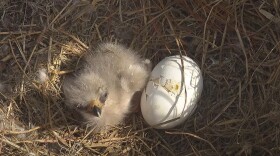Boasting more than 80 distinct ecosystems, Florida is a biodiversity hot spot. More than 4,000 animal species, in fact, are native to the Sunshine State.
As the weather continues to warm, a growing number of species are on the move, meaning interactions with humans are increasingly common.
Through the UF/IFAS “Florida Critter of the Month” series, we’re highlighting native animals that wildlife watchers are likely to encounter and providing bite-sized guides to their behavior.
Below, Steve Johnson, a UF/IFAS department of wildlife ecology and conservation professor, provides some insight into Florida’s native snake population.
Q. How would you characterize Florida’s native snake population?
A. Florida is home to about 50 species of native snakes, and there are an additional five species of established, introduced species. Among the native species, there are six venomous species, including five pit vipers (three rattlesnakes, the cottonmouth and the copperhead) and the Eastern coral snake (also known as the harlequin coral snake).
All the pit vipers give birth to live young, but the coral snake lays eggs. Among the non-venomous native species, about 20 lay eggs and about 20 give birth to live young.

Florida’s native snakes may be encountered in a diversity of habitats, ranging from dry upland forests to lowland swamps and marshes. One species of water snake even lives in mangroves and saltmarsh habitats.
Q. When are native Florida snakes most active?
A. Many species are active year-round in Florida, but they are most active during the warmer months. Some species are more active at night, and others are more active during the day. During the hottest times of the year, snakes will be more active at night to avoid the extreme heat. Some species spend a lot of time underground but will be active on the surface after rain.
Q. What type of behaviors might Florida’s native snakes engage in during this time of year?
A. Many Florida snakes breed during the warmer months. In some species, two males will fight each other in a ritualized combat for the “right” to mate with a female. Among Florida species, this is known to occur in Eastern diamond-backed rattlesnakes, timber rattlesnakes, cottonmouths and Eastern indigo snakes.

Q. What should someone do if they encounter a snake?
A. If someone sees a snake, they should observe it from a distance, especially if they don’t know what species it is. Snakes are really interesting animals that play important roles in Florida’s natural environment. Only a few species pose any danger to people or pets, and the best way to avoid a negative encounter with a venomous snake is to just leave it alone. Attempting to harm or harass the snake puts people at risk of a bite.
Cottonmouths have a misguided reputation as being inherently aggressive toward people. Like all snakes, cottonmouths will try to avoid conflicts with people. If approached, they usually remain still. If on the move, they will try to flee. If they find themselves in an exposed position and fleeing does not work, they will hold their ground and may open their mouth to show the cotton-white interior as a warning to the would- be attacker to stay away.
Visit Johnson’s Lab online to learn more about Florida’s native snake populations.
ABOUT UF/IFAS: The mission of the University of Florida Institute of Food and Agricultural Sciences (UF/IFAS) is to develop knowledge relevant to agricultural, human and natural resources and to make that knowledge available to sustain and enhance the quality of human life. With more than a dozen research facilities, 67 county Extension offices, and award-winning students and faculty in the UF College of Agricultural and Life Sciences, UF/IFAS brings science-based solutions to the state’s agricultural and natural resources industries, and all Florida residents.







